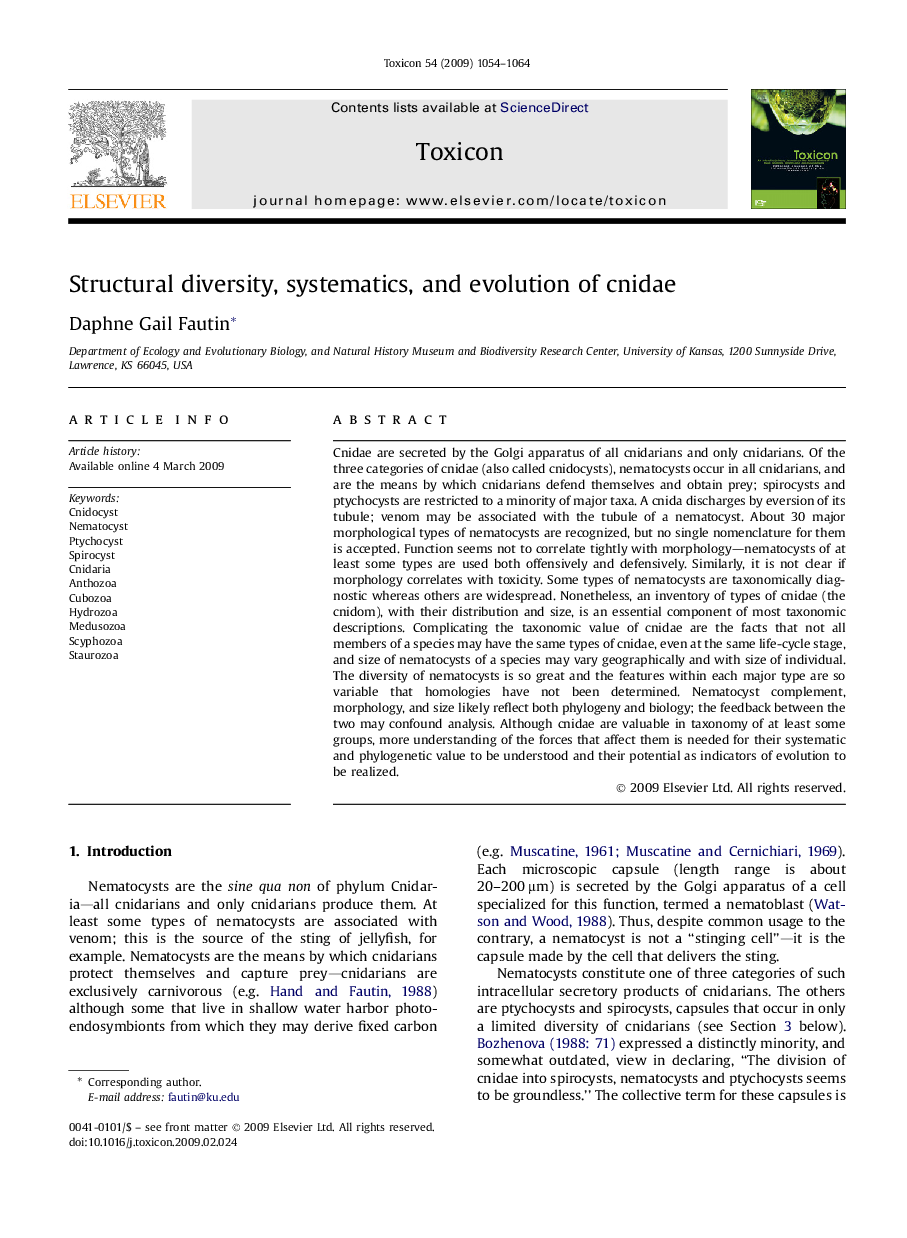| کد مقاله | کد نشریه | سال انتشار | مقاله انگلیسی | نسخه تمام متن |
|---|---|---|---|---|
| 2065103 | 1076905 | 2009 | 11 صفحه PDF | دانلود رایگان |

Cnidae are secreted by the Golgi apparatus of all cnidarians and only cnidarians. Of the three categories of cnidae (also called cnidocysts), nematocysts occur in all cnidarians, and are the means by which cnidarians defend themselves and obtain prey; spirocysts and ptychocysts are restricted to a minority of major taxa. A cnida discharges by eversion of its tubule; venom may be associated with the tubule of a nematocyst. About 30 major morphological types of nematocysts are recognized, but no single nomenclature for them is accepted. Function seems not to correlate tightly with morphology—nematocysts of at least some types are used both offensively and defensively. Similarly, it is not clear if morphology correlates with toxicity. Some types of nematocysts are taxonomically diagnostic whereas others are widespread. Nonetheless, an inventory of types of cnidae (the cnidom), with their distribution and size, is an essential component of most taxonomic descriptions. Complicating the taxonomic value of cnidae are the facts that not all members of a species may have the same types of cnidae, even at the same life-cycle stage, and size of nematocysts of a species may vary geographically and with size of individual. The diversity of nematocysts is so great and the features within each major type are so variable that homologies have not been determined. Nematocyst complement, morphology, and size likely reflect both phylogeny and biology; the feedback between the two may confound analysis. Although cnidae are valuable in taxonomy of at least some groups, more understanding of the forces that affect them is needed for their systematic and phylogenetic value to be understood and their potential as indicators of evolution to be realized.
Journal: Toxicon - Volume 54, Issue 8, 15 December 2009, Pages 1054–1064